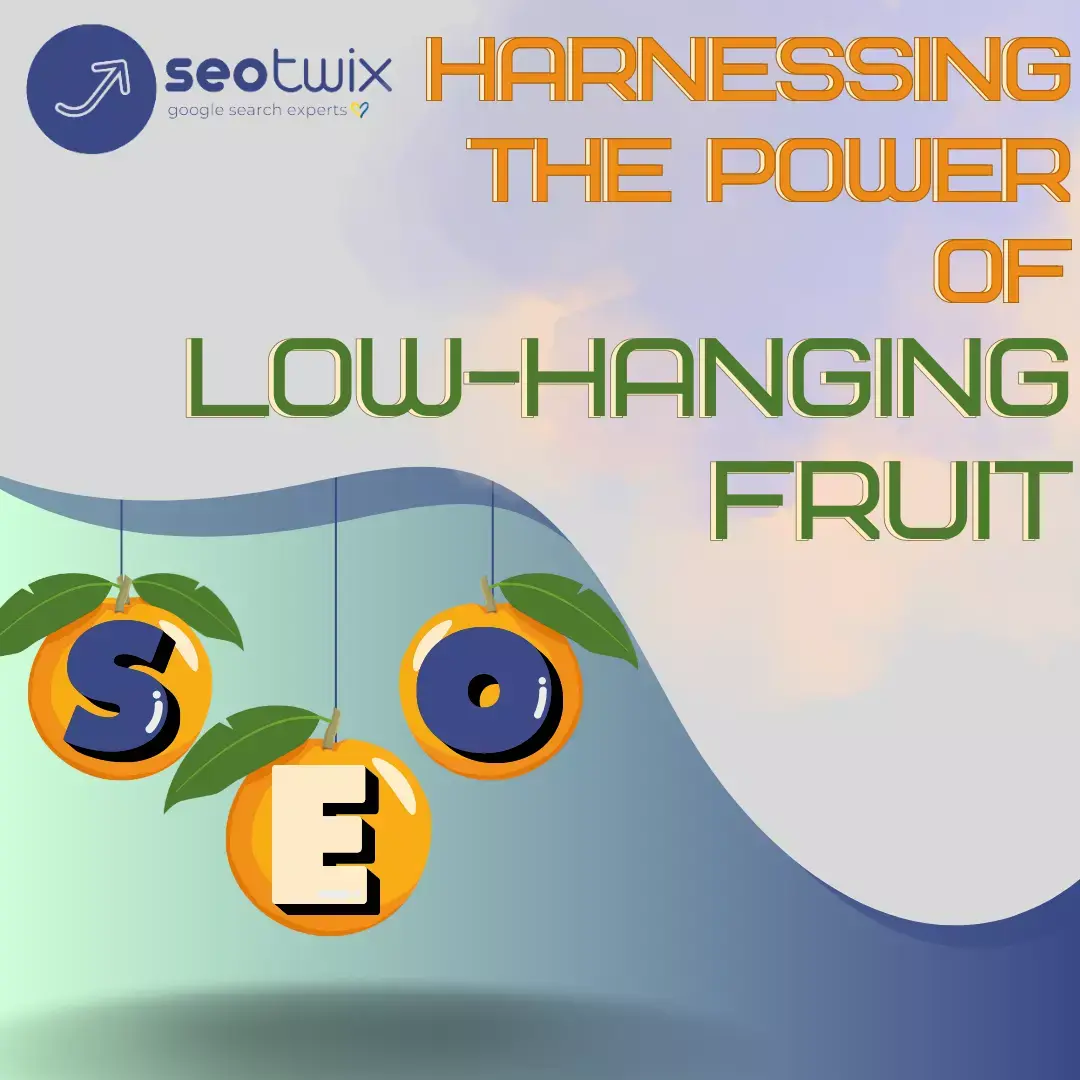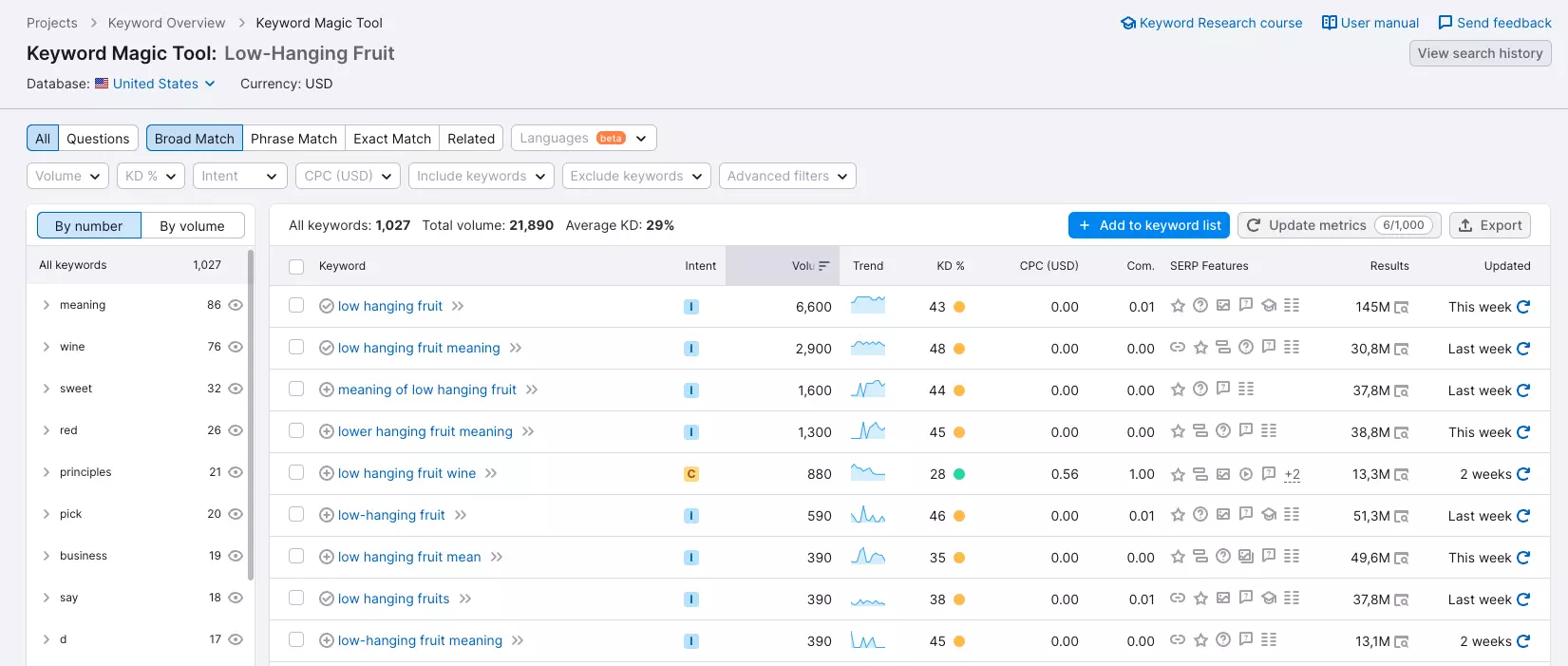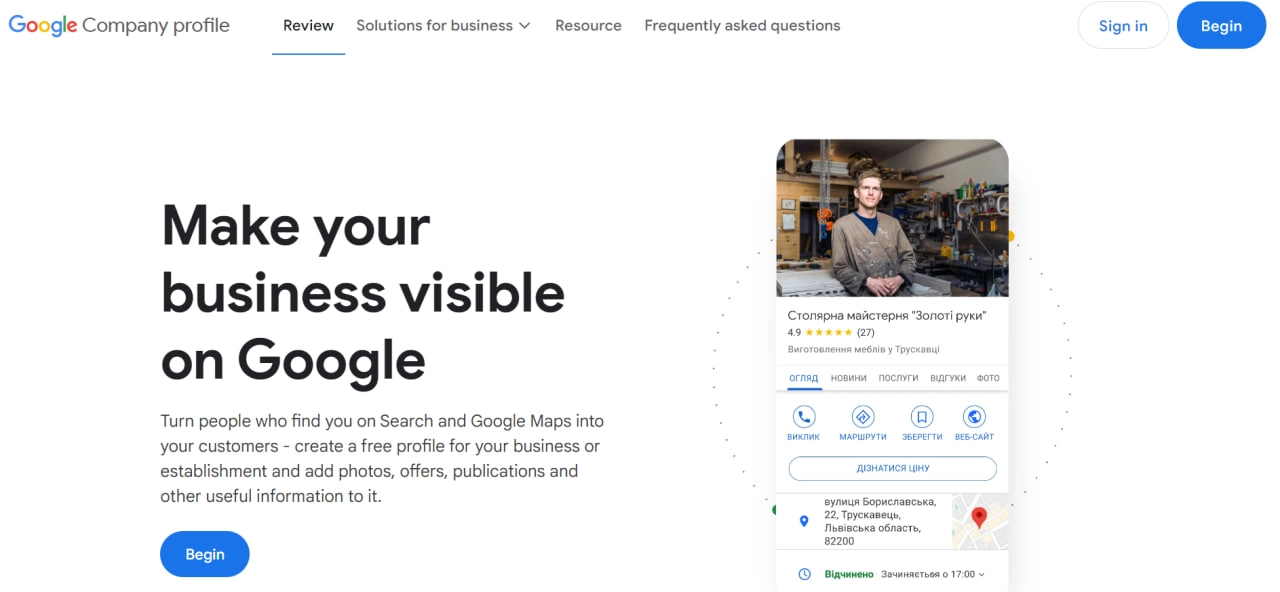Search Engine Optimization (SEO) is a crucial aspect of modern digital marketing, as it helps businesses increase their online visibility and attract valuable organic traffic. While many SEO strategies involve complex techniques and long-term efforts, there’s a fruitful approach that often goes overlooked – harnessing the power of “low-hanging fruit.” In this article, we’ll explore what low-hanging fruit means in the context of SEO, why it’s essential for your strategy, and practical tips to capitalize on these opportunities for SEO success.
The Meaning of Low Hanging Fruits
“Low hanging fruits” refers to the easiest opportunities available, those that require minimal effort to achieve maximum results.
In the context of SEO, low hanging fruits are the quick wins or straightforward strategies that can significantly boost your website’s ranking on search engine results pages (SERPs) without extensive time or resource investment.
These are the tasks that you can tackle with minimal effort yet yield substantial benefits, allowing you to make noticeable progress while you work on more complex, long-term SEO goals.
Why Low-Hanging Fruit Matters for SEO
- Quick Wins: Low-hanging fruit offers an excellent opportunity to achieve quick wins. By focusing on these easy-to-implement improvements, you can see tangible results in a short period, boosting your motivation to tackle more challenging SEO tasks.
- Improved User Experience: Many low-hanging fruit SEO opportunities revolve around enhancing the user experience. Search engines value user-centric websites, and by addressing these areas, you provide visitors with a more satisfying and seamless browsing experience.
- Enhanced Search Visibility: As you optimize for low-hanging fruit, you may uncover keyword opportunities that are less competitive but still relevant to your audience. This can improve your chances of ranking higher on the search engine results pages (SERPs) and attracting targeted traffic.
Identifying Low Hanging Fruits in SEO
Recognizing and leveraging low hanging fruits can provide a solid foundation for your SEO efforts. Here are some typical examples of low hanging fruits in SEO:
Keyword Research
The foundation of any successful SEO strategy is comprehensive keyword research and analysis. While many businesses often focus on high-volume keywords, it’s equally important to explore and uncover low hanging fruit keywords. Tools like Google Keyword Planner, SEMrush, and Ahrefs can assist in identifying these opportunities. Look for long-tail keywords and question-based queries that align with your content and audience intent. These are often less competitive and can bring in targeted traffic.
On-Page SEO
Once the low-hanging fruit keywords have been identified, it’s crucial to optimize your on-page content for them. Ensure that the targeted keywords are strategically placed in the title tag, meta description, headers, and throughout the body of the content. But be cautious not to overstuff your content with keywords, as it may lead to keyword cannibalization and a negative impact on rankings.
Page Speed Optimization
Improve your website’s loading speed by compressing images, leveraging browser caching, and minimizing unnecessary scripts. Enhancing user experience through faster-loading pages leads to positive impacts on search rankings.
Mobile Responsiveness
With the increasing use of mobile devices, ensuring your website is mobile-friendly is crucial. Responsive design helps improve user experience and is a ranking factor for search engines like Google.
Backlink Strategy
Backlinks remain a crucial ranking factor in SEO. While acquiring high-quality backlinks can be challenging for competitive keywords, low hanging fruit keywords often attract fewer competitors and are more accessible for link-building outreach. Seek opportunities to collaborate with relevant websites, industry blogs, and influencers to earn valuable backlinks that boost your rankings.
Fixing Broken Links
Regularly check for broken links on your website and fix them promptly. Broken links can harm user experience and may negatively impact your search rankings.
Local SEO
If your business serves a specific geographic area, claim and optimize your Google My Business listing. This free and user-friendly platform enables you to manage how your business appears in Google Search and Maps, making it an essential component of your low-hanging fruit strategy. For expert assistance in optimizing your Google My Business profile and enhancing your local visibility, consider our comprehensive \ at Seotwix. Our team can help you leverage this powerful tool to attract more customers and stand out in local search results.
Analyzing and Adapting
SEO is not a one-time task; it requires continuous analysis and adaptation. Keep track of your efforts, monitor the performance of low-hanging fruit keywords, and adjust your strategy accordingly. Measure key performance indicators (KPIs) such as organic traffic, click-through rates, and conversion rates to gauge the effectiveness of your SEO initiatives.
Content Updates
Review your existing content regularly and update it with fresh information or insights. Google rewards websites that consistently provide up-to-date and relevant content.
Three Popular Low-Hanging Fruit Strategies for SEO Success
The first involves improving the click-through rate of top-ranked pages. By analyzing current rankings, we can identify pages ranking for relevant queries but suffering from low click-through rates. Optimizing snippets, titles, and meta descriptions can yield immediate improvements, ensuring that the core content is not omitted or overshadowed by competitors.
The second scenario is optimizing internal links of pages that are almost ranking within the top positions. These pages may lack backlinks or internal links, hindering their progression to higher rankings. By consolidating data and linking almost-ranking pages to popular pages with existing backlinks, we can boost their authority and ranking potential.
Lastly, we must detect shifts in search trends or content decay. Some previously successful content may now be outdated or no longer in line with user intent due to Google’s algorithm updates. By regularly assessing the performance of top content and updating or diversifying it accordingly, we can maintain its relevance and effectiveness.
While implementing a low-hanging fruit analysis alongside the traditional SEO process may seem like extra work, it proves advantageous in the long run. We can prioritize actions that yield quick results, appeasing stakeholders’ impatience and accelerating the overall SEO progress.
Harnessing the power of low-hanging fruit is a smart and effective way to boost your SEO efforts. By focusing on quick wins and addressing simple but impactful improvements, you can enhance your website’s performance, increase organic traffic, and improve your search engine rankings. Remember that SEO is an ongoing process, and combining low hanging fruit strategies with long-term optimization efforts will yield the best results. So, start implementing these tips today and watch your SEO success soar to new heights!







